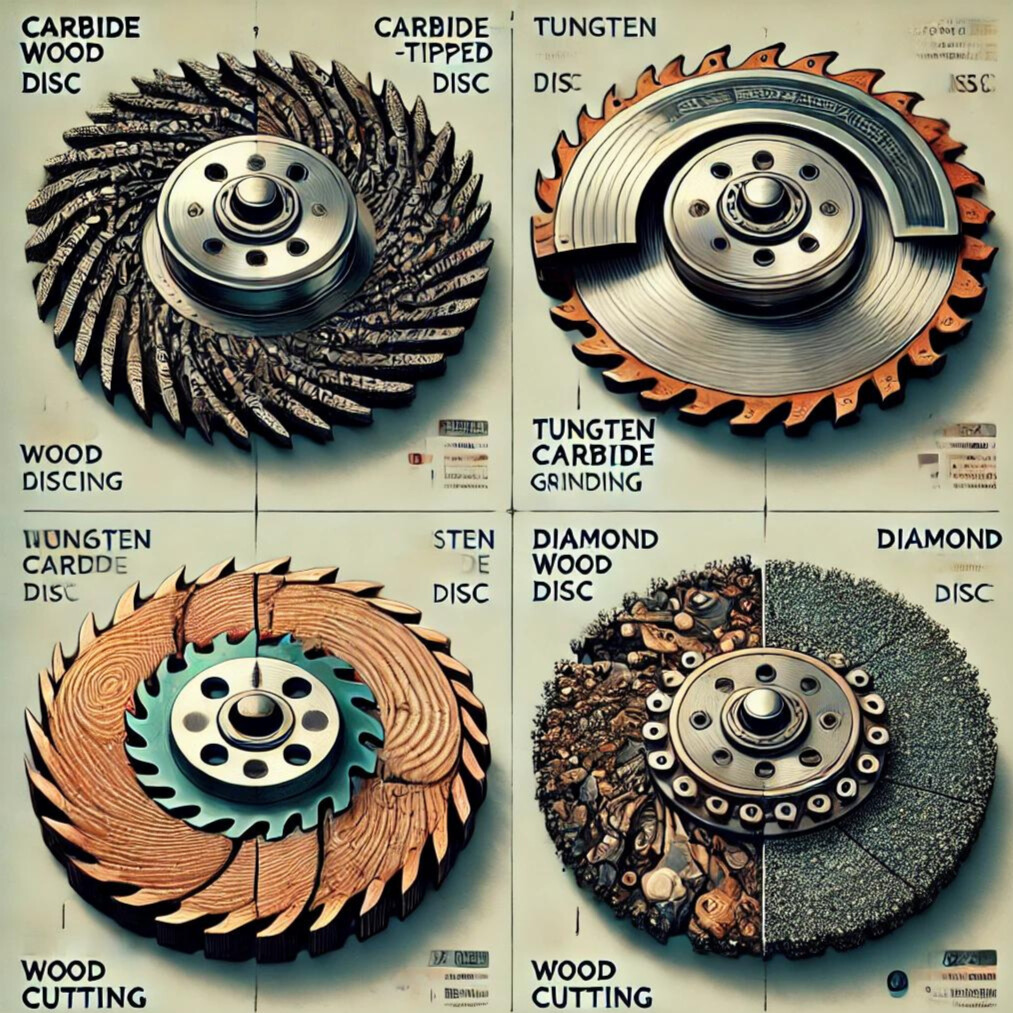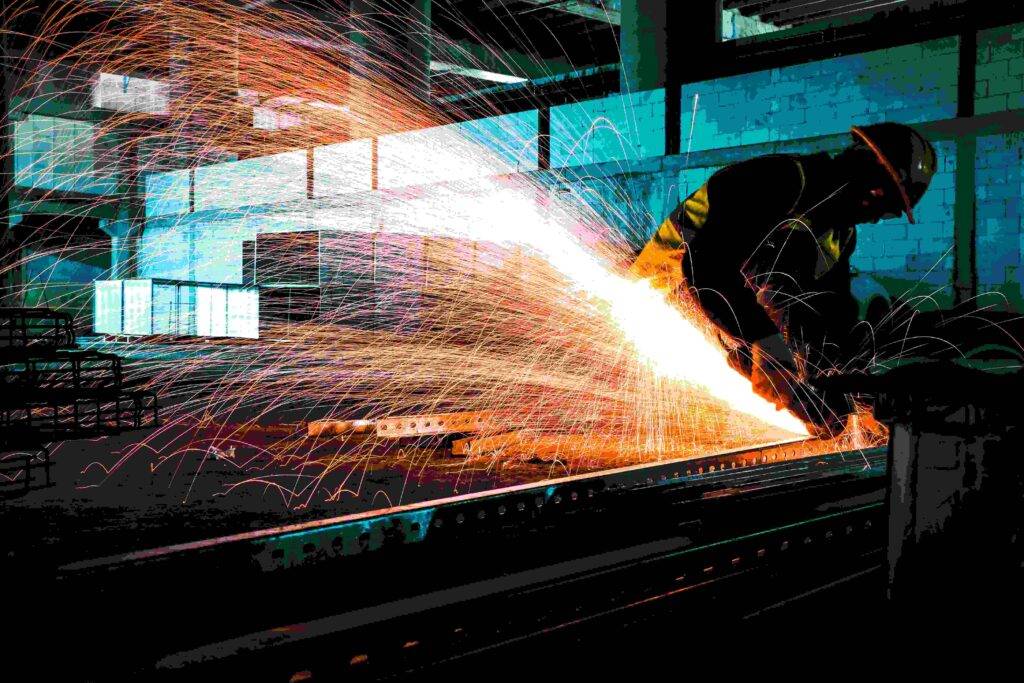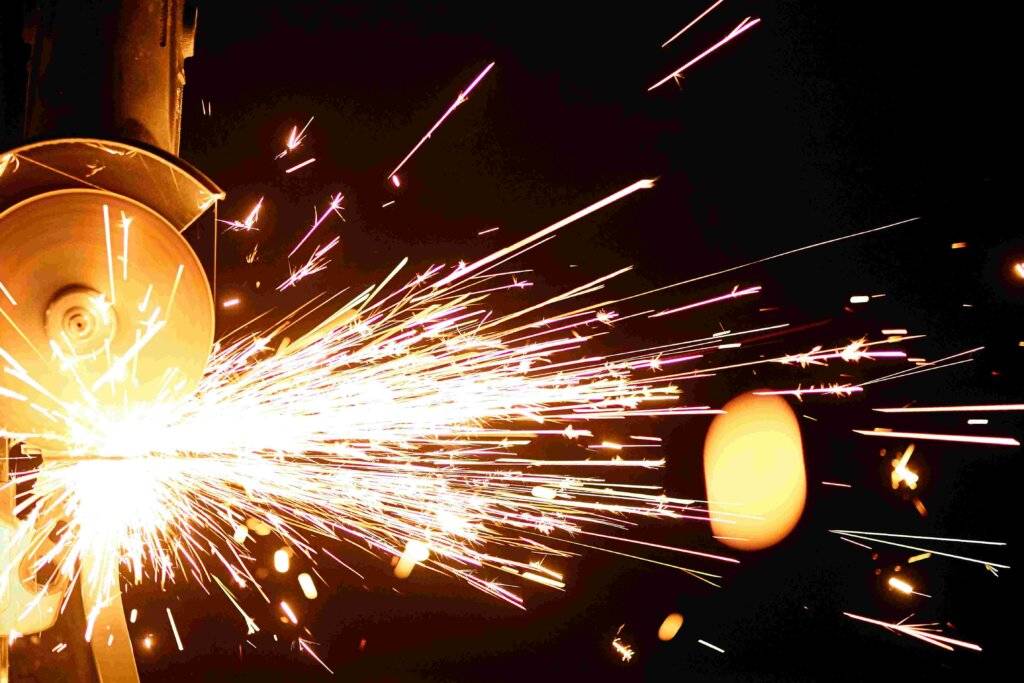Wood cutting discs for angle grinders have become a popular tool among DIY enthusiasts, carpenters, and even casual woodworkers. Angle grinders, traditionally used for metalwork and masonry, have expanded in use thanks to specially designed cutting discs that allow them to cut through wood with precision and efficiency. Whether you’re trimming, shaping, or creating intricate designs in wood, using the right wood cutting disc can make a big difference in both the quality of the work and the ease of the process.
In this comprehensive guide, we’ll cover everything you need to know about wood cutting discs for angle grinders. We’ll explore the different types of discs available, their pros and cons, the best practices for safe and effective use, and how to choose the best one for your specific woodworking needs.
What Is a Wood Cutting Disc for an Angle Grinder?
A wood cutting disc is a circular blade designed to attach to an angle grinder to cut through wood materials. Angle grinders are traditionally designed to work with metal or masonry materials, but thanks to advancements in disc design, they can now be used for a range of woodworking tasks. Wood cutting discs are made from various materials, including carbide, tungsten, and steel, and come in different shapes and designs to perform different types of cuts.
Unlike standard metal cutting discs, wood cutting discs are designed to handle the softer, fibrous nature of wood. They typically have teeth or are made of abrasive materials that allow them to cut smoothly through wood without tearing or burning it. The type of wood cutting disc you use will depend on the kind of woodworking project you’re tackling.
Types of Wood Cutting Discs
There are several different types of wood cutting discs available for angle grinders, each suited to different kinds of woodworking tasks. The most common types include:
1. Carbide Tipped Disc
This is one of the most common types of wood cutting discs. Carbide-tipped discs have small, sharp teeth made from carbide, a material known for its durability and ability to stay sharp over long periods. These discs are designed for cutting through soft and hardwoods, as well as plywood and composite materials. Carbide-tipped discs can make clean, precise cuts and are often used for general woodworking tasks.
2. Tungsten Carbide Grinding Disc
Tungsten carbide grinding discs are designed more for grinding, shaping, and sculpting wood rather than cutting straight through it. These discs have an abrasive surface made from tungsten carbide that removes material quickly and efficiently. They are perfect for carving, shaping, and creating intricate designs in wood. They are also useful for removing old finishes or smoothing rough wood surfaces.
3. Chainsaw Tooth Disc
The chainsaw tooth disc is one of the most aggressive wood cutting discs available. It features chainsaw-style teeth embedded around the perimeter of the disc. These teeth are very sharp and can cut through wood quickly and with minimal effort. Chainsaw tooth discs are ideal for rough cuts, trimming logs, or carving out large sections of wood. However, due to their aggressive nature, they should be used with caution, as they can easily cause kickback if not handled properly.
4. Diamond Wood Cutting Disc
Diamond wood cutting discs are typically used for more specialized woodworking projects. They are not as common as carbide or chainsaw discs but are useful when working with very hard or abrasive wood materials. Diamond discs can make very clean, precise cuts and are often used in fine woodworking or intricate designs. They are also more expensive than other types of discs, but their long-lasting sharpness can make them worth the investment for certain projects.
Here’s a comparison table for different types of wood cutting discs for angle grinders:
| Type of Wood Cutting Disc | Best For | Key Features | Pros | Cons | Price Range |
|---|---|---|---|---|---|
| Carbide-Tipped Disc | General wood cutting | Sharp carbide teeth | Clean, precise cuts; durable; versatile | Can be expensive; not suited for rough cuts | Medium to High |
| Tungsten Carbide Grinding Disc | Shaping, sculpting, grinding wood | Abrasive surface made of tungsten carbide | Fast material removal; good for carving | Not for precision cutting; aggressive | Medium |
| Chainsaw Tooth Disc | Rough cutting, trimming, carving | Chainsaw-style teeth | Fast and aggressive cuts; ideal for thick wood | High risk of kickback; needs careful handling | Low to Medium |
| Diamond Wood Cutting Disc | Fine woodworking, intricate designs | Diamond-coated cutting surface | Extremely precise cuts; long-lasting sharpness | Expensive; specialized use | High |
This table highlights the different wood cutting discs in terms of their intended use, key features, pros and cons, and typical price range.
How to Choose the Right Wood Cutting Disc
Selecting the right wood cutting disc for your angle grinder can be the difference between a successful project and a frustrating one. Here are some key factors to consider when choosing the best disc for your needs:
1. Type of Wood
The type of wood you’ll be cutting is an important consideration. Softwoods, such as pine or cedar, can be cut with just about any type of disc, but hardwoods like oak or maple require more durable discs, such as carbide-tipped or diamond discs. If you’re working with plywood or composite materials, you’ll also want a disc that can handle those materials without causing tear-out or burning.
2. Type of Cut
Different woodworking tasks require different types of cuts, and certain discs are better suited for specific tasks. For example, if you’re doing precision trimming or making detailed cuts, a carbide-tipped disc or a fine-toothed disc would be ideal. If you’re doing rough cuts or need to remove a lot of material quickly, a chainsaw tooth disc or tungsten carbide disc would be more appropriate.
3. Grinder Size and Speed
The size and speed of your angle grinder will also affect which disc you should use. Most wood cutting discs are designed for 4.5-inch or 5-inch angle grinders, but there are larger discs available for bigger grinders. Additionally, check the speed rating of the disc to ensure it matches the speed of your angle grinder. Using a disc that isn’t rated for the grinder’s speed can result in accidents or damage to the disc.
4. Safety Features
Safety should always be a priority when using an angle grinder with a wood cutting disc. Some discs come with safety features, such as anti-kickback designs or reinforced edges, to reduce the risk of accidents. It’s also important to use safety gear, including gloves, safety glasses, and hearing protection when working with wood cutting discs.
Best Practices for Using Wood Cutting Discs Safely
Angle grinders are powerful tools, and using them with wood cutting discs requires careful handling to avoid accidents. Here are some safety tips to keep in mind:
1. Wear Protective Gear
Always wear the appropriate protective gear when using an angle grinder. This includes safety glasses to protect your eyes from flying debris, gloves to protect your hands, and hearing protection to guard against the loud noise of the grinder. A dust mask is also recommended when cutting wood, as the dust created can be harmful if inhaled.
2. Secure the Wood Properly
Make sure the piece of wood you’re cutting is securely clamped or fixed in place before starting. Loose wood can cause the grinder to slip or kick back, leading to injury. Always ensure that the wood is stable and won’t move while you’re cutting.
3. Use the Correct Angle and Pressure
When cutting with an angle grinder, it’s important to hold the tool at the correct angle and apply even pressure. Holding the grinder at too steep an angle can cause the disc to bind or dig into the wood, while too shallow an angle may cause the disc to skip across the surface. Apply steady, even pressure without forcing the grinder into the wood.
4. Check the Disc Regularly
Before each use, inspect the wood cutting disc for any signs of damage, such as cracks or missing teeth. Using a damaged disc can cause it to shatter or break during use, which can be extremely dangerous. Replace any damaged or worn discs immediately.
Conclusion
Wood cutting discs for angle grinders open up a world of possibilities for woodworking projects, offering speed, precision, and versatility. Whether you’re doing fine carpentry, rough cutting, or detailed carving, there’s a wood cutting disc suited to your task. By selecting the right disc, using proper techniques, and following safety protocols, you can achieve professional-quality results in your woodworking projects.



